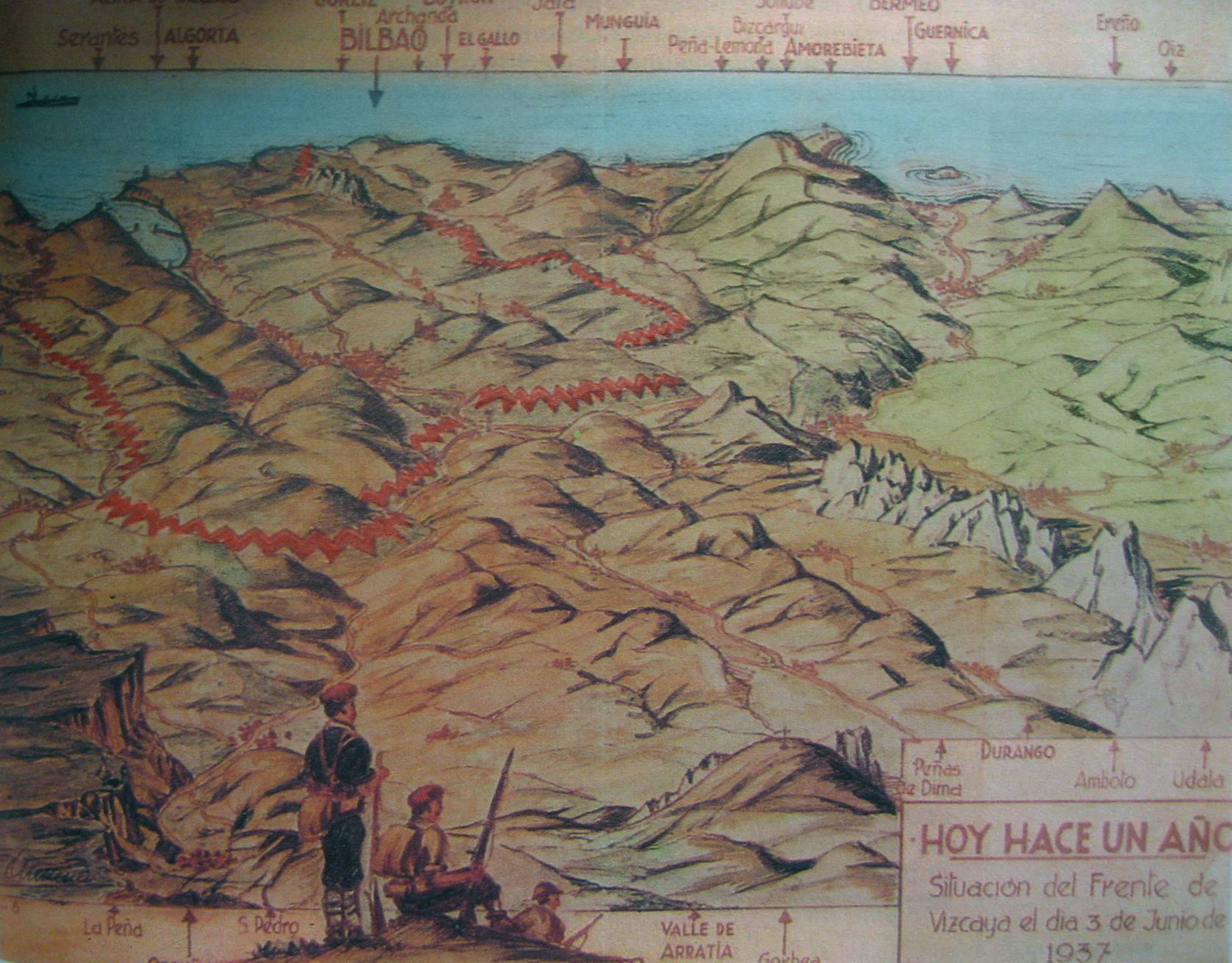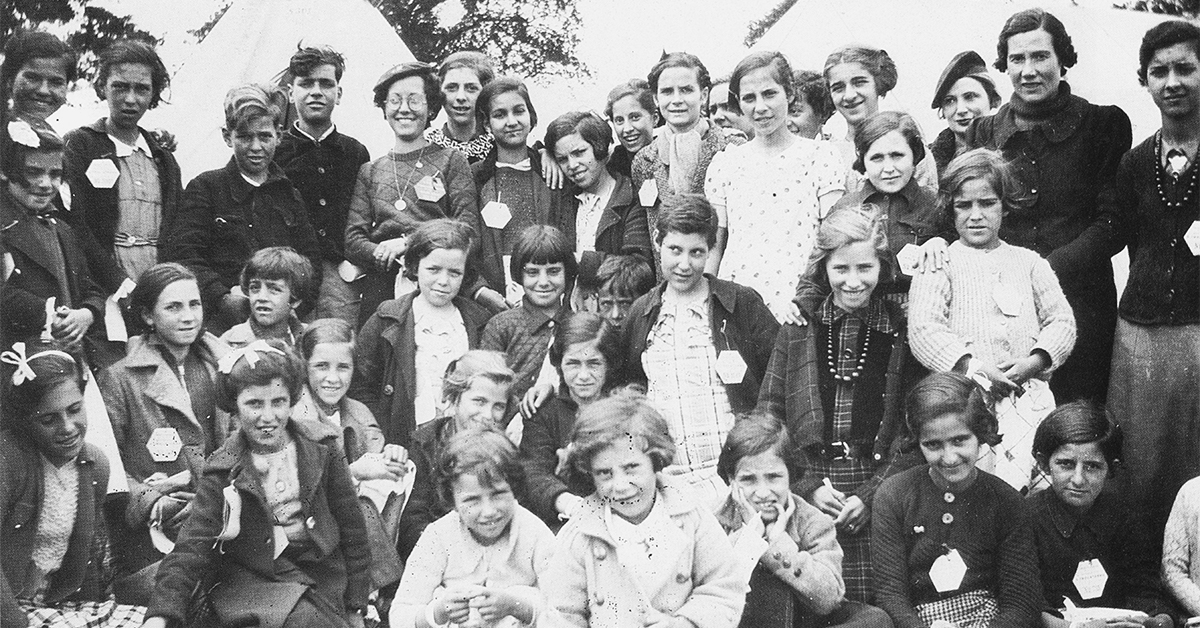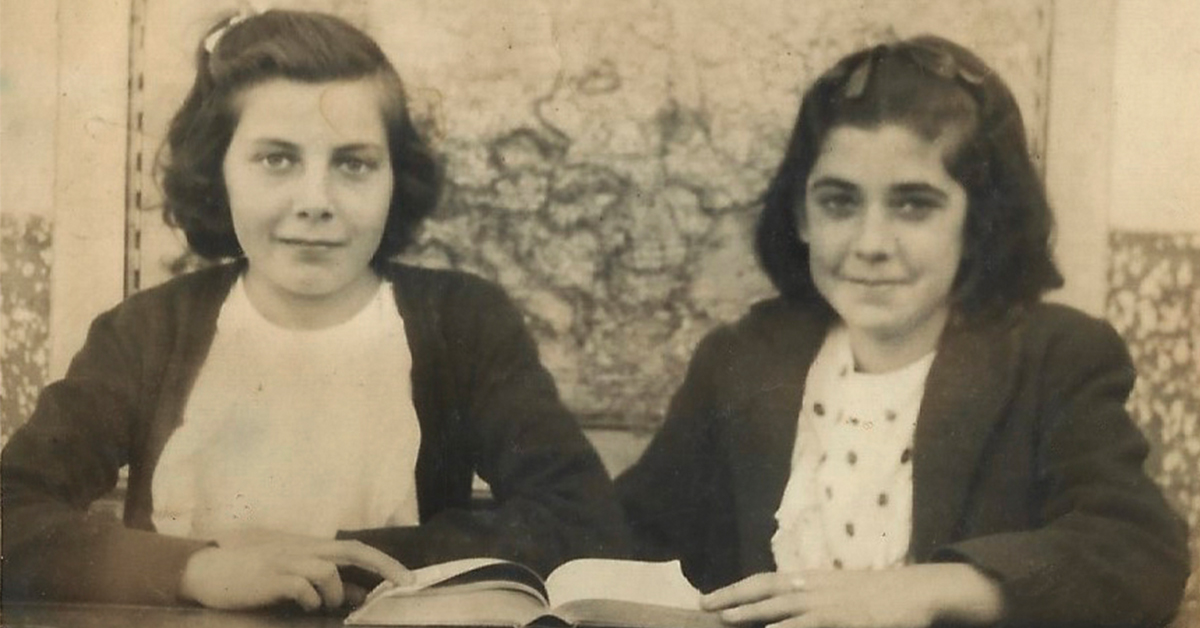Archives
The seizure of Basque territory and the rest of the Republican north by Franco’s troops, and the subsequent repression and exclusion, led to a great tide of exiles leaving for elsewhere. It is estimated that 100,000 Basques went into exile, from our land, between 1936 and 1937, 30,000 of whom were children, and that over 10,000 people were from the Basque Country out of the 500,000 people who left in the so-called “Withdrawal” from Catalonia to France in 1939.
The first important exodus of the Basque population abroad took place just a few weeks after the start of the war, during the Gipuzkoa campaign. Many women and children fled to France, driven by the widespread fear among the population caused by the rapid advance of the rebel troops towards the frontier area and the proximity of the fighting. From the first week of May 1937, after the Franco offensive on Bizkaia, when the frequent bombardments of the different towns led to many dead and emerging hunger, the concern spread to the whole society and resulted in the large-scale evacuation of the civilian population.
Until well into the second half of the last century, children entered formal education at six or seven years of age. Compulsory schooling was of short duration, usually up to the age of twelve, or fourteen at most, depending on the demand for hand labour in the respective family’s household. In addition to the standard schooling period being not long enough for the appropriate instruction of boys and girls, there was also a high level of school absenteeism, especially in rural areas, due to the urgency of farm chores and the inclement weather. For a good number of scholars, heavy precipitations and low temperatures would sure make their long daily journeys on foot from the farmhouse to the school exceedingly difficult.

Francoist propaganda illustration of the Iron Ring.
In the midst of the Civil War, in early October 1936, after the fall of Gipuzkoa into the hands of the rebel troops and the consolidation of the Basque resistance, the Bizkaia Defence Board acknowledged the need to provide Bilbao and its immediate surroundings with defensive works as protection in the event a new attack by Franco’s army managed to break the established front line. Days later the recently-formed Basque Government presented the draft. José Antonio Agirre, then defence counsellor, along with the head of the Basque Government, commissioned Engineering Commander Alberto Montaud to undertake the construction of what was called Bilbao’s Defensive Ring: a vast fortification consisting of a ring of trenches, machine-gun positions, strongpoints and secret bunkers. The Ring was divided into five sectors running along the route Zierbena – Sodupe – Miraballes – Usansolo – Larrabetzu – Barrika, the city of Bilbao, the Lamiako and Sondika aerodromes, the harbour with battery emplacements at Punta Galea and Punta Lucero, the Zollo reservoir, and the power station at Burtzeña lying within its borders. It covered overall a perimeter of 80 km over the mountains around Bilbao, defended by 45 000 gudaris and militia members of the Army of the Basque Country. (more…)





